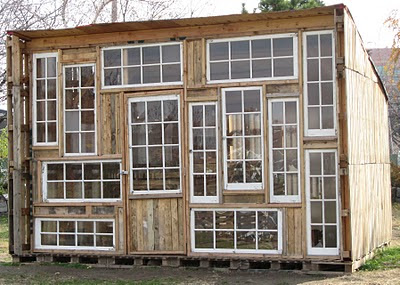fluttering from the autumn tree.
~ Emily Brontë
Today was "Leaf Fest" day along the Long Island City waterfront — not that I knew that when I decided to take the two-mile walk down Vernon Boulevard to the Noguchi Museum and Socrates Sculpture Park.
 Compost Day in Rainey Park
Compost Day in Rainey ParkRainey Park is a small but pleasant patch of green that overlooks the East River in Astoria. When my daughter was in the early years of elementary school, it was her school's go-to destination for outdoor class trips. Today an exceptionally friendly woman named Shirley (at left) was greeting all passers-by. She and her colleague Stephanos are volunteers with an organization called the Western Queens Compost Initiative (WQCI), and as the name suggests, they are all about composting leaves. Today was Leaf Fest, an occasion that united the WQCI with three other organizations — the Partnership for Parks, Green Shores NYC and Million Trees NYC — to create leaf drop-off and composting events.
A block or two farther along trees were talking to me again. Have a look at this strange arboreal configuration. I think of it as the horseshoe tree.
Defiant Angels at Socrates Sculpture Park
Socrates Sculpture Park is a local institution that allows sculptors to create and display large-scale work in a riverfront park. Among the sites right now is Fort Defiance North by sculptor Scott Andresen, which seems to be named after the Fort Defiance that stood in Red Hook, Brooklyn during the Revolutionary War.
At least that's what I thought until I looked inside.
It's one of sculptor Dan Steinhilber's cast-concrete snow angels, part of a sculptural array he calls "Casting Angels."
You can see a video about how they were made here.
As I walked the two miles back home, leaves were on my mind. They were everywhere. These leaves in particular got me wondering about color. Why should leaves take on the color of dried blood or animal organs in autumn? What advantage could those deep colors give to a tree?
Why Leaves Turn Red
So I looked it up on Wikipedia (I know, I know). The red and purple colors of autumn leaves are the result of pigments called anthocyanins that are only produced after the growing season ends. Bright cool days and chilly nights bring them out. Why do leaves do this? Nobody really knows, but there are three theories.
- Photoprotection: The idea here is that anthrocyanins "protect the leaf against the harmful effects of light at low temperatures" and allow the trees to reabsorb nutrients such as nitrogen more efficiently.
- Coevolution: This theory says the colors scare off insects that might otherwise use the trees as hosts for the winter.
- Allelopathy: According to a study of maple trees by researchers at Colgate University, "anthocyanins, which create the visual red hues, have been found to aid in interspecific competition by stunting the growth of nearby saplings in what is known as allelopathy." If I understand that sentence, then the red color may somehow give maples an advantage over nearby trees.







No comments:
Post a Comment